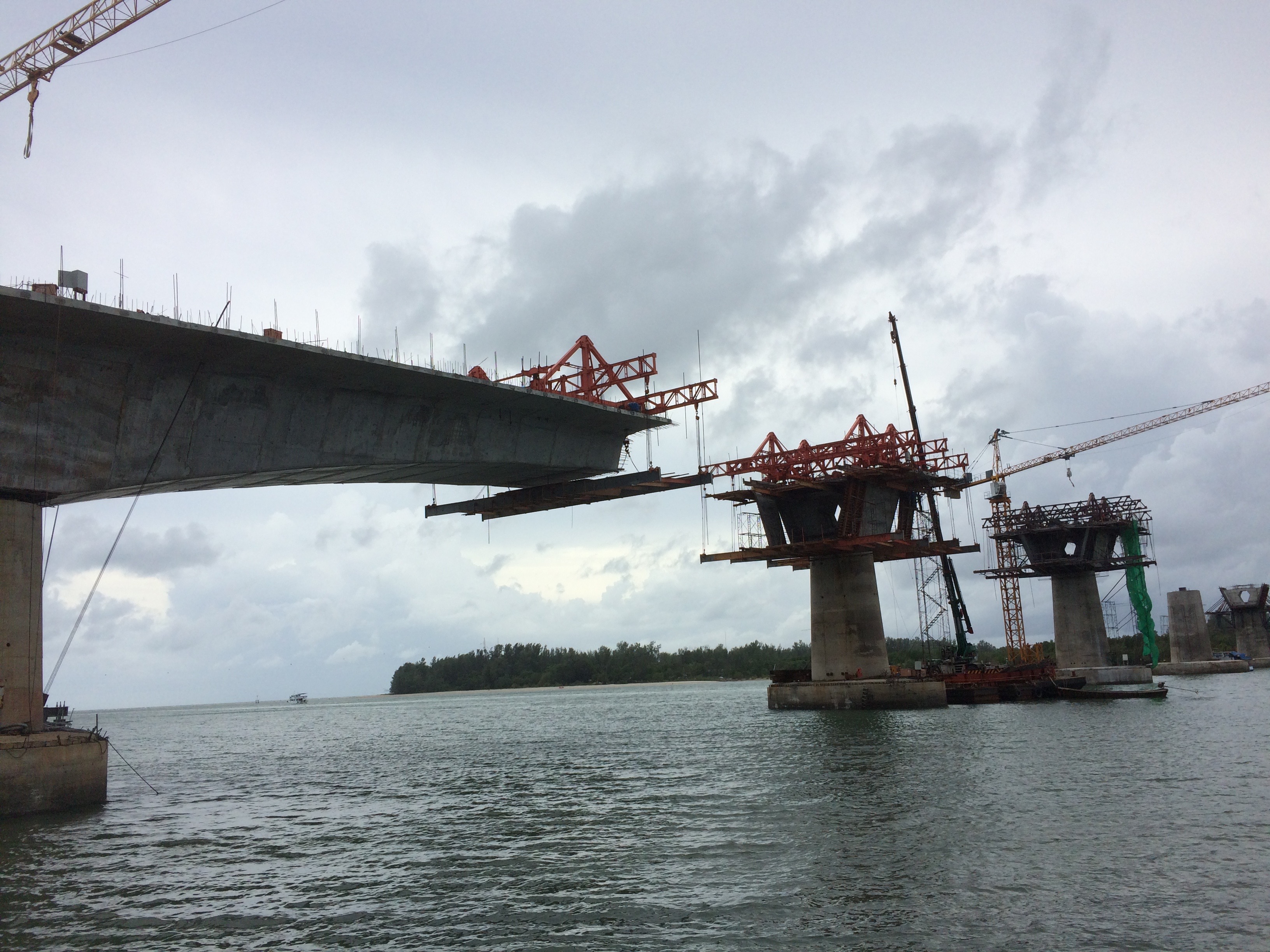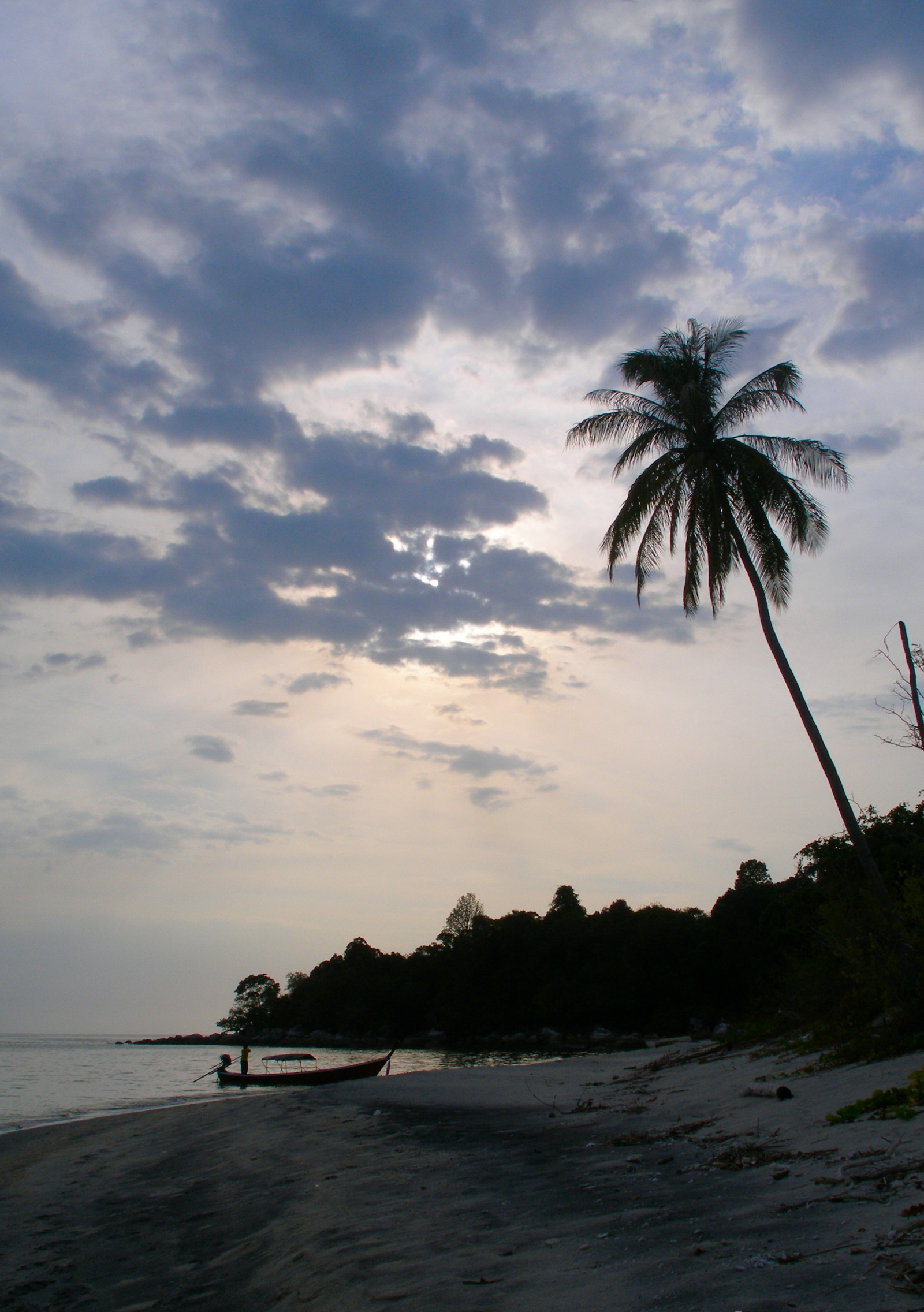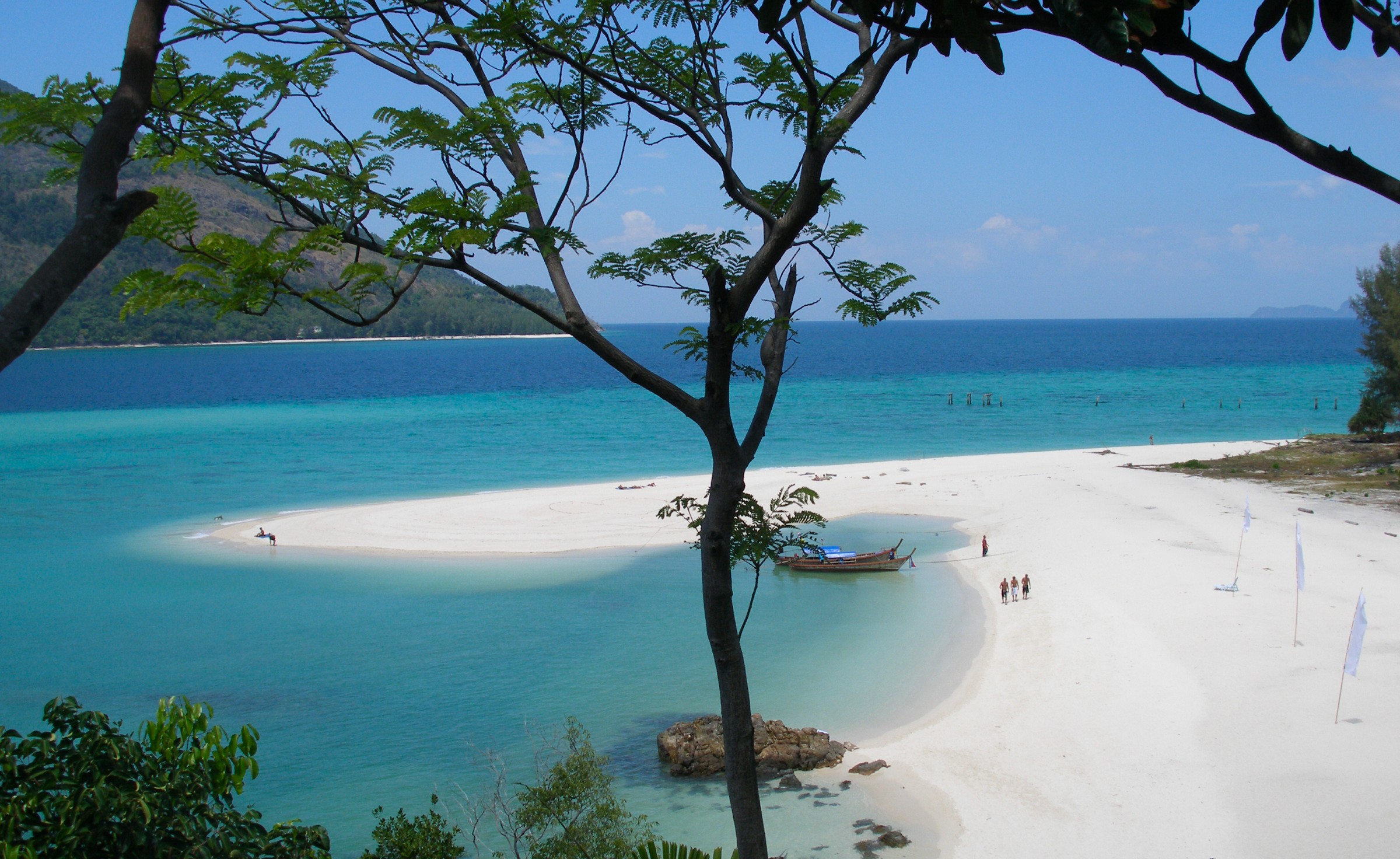|
Urak Lawoi
Urak Lawoi ( ms, Orang Laut; th, อูรักลาโว้ย; ) are an Aboriginal Malay people residing on the islands of Phuket Province, Phuket, Phi Phi, Jum (island), Jum, Ko Lanta District, Lanta, Bulon and on Ko Lipe, Lipe and Ko Adang, Adang, in the Adang Archipelago, off the western coast of Thailand. They are known by various names, including Orak Lawoi', Lawta, Chao Tha Le (), Chao Nam (), and Lawoi. The population of approximately 6,000 speak a language related closely to Malay language, Malay but influenced by Thai language, Thai. The Urak Lawoi are one of several southeast Asian ethnicities referred to as "Sea Gypsies" (''chao leh'' in Thai). The local way of life has been changing rapidly in recent years, due to the rapid encroachment of the market economy, and the opening of Tarutao National Marine Park. See also *Sea Gypsies (other) References Ethnic groups in Thailand Nomadic groups in Eurasia {{Asia-ethno-group-stub ... [...More Info...] [...Related Items...] OR: [Wikipedia] [Google] [Baidu] |
Thailand
Thailand ( ), historically known as Siam () and officially the Kingdom of Thailand, is a country in Southeast Asia, located at the centre of the Indochinese Peninsula, spanning , with a population of almost 70 million. The country is bordered to the north by Myanmar and Laos, to the east by Laos and Cambodia, to the south by the Gulf of Thailand and Malaysia, and to the west by the Andaman Sea and the extremity of Myanmar. Thailand also shares maritime borders with Vietnam to the southeast, and Indonesia and India to the southwest. Bangkok is the nation's capital and largest city. Tai peoples migrated from southwestern China to mainland Southeast Asia from the 11th century. Indianised kingdoms such as the Mon, Khmer Empire and Malay states ruled the region, competing with Thai states such as the Kingdoms of Ngoenyang, Sukhothai, Lan Na and Ayutthaya, which also rivalled each other. European contact began in 1511 with a Portuguese diplomatic mission to Ayutthaya, w ... [...More Info...] [...Related Items...] OR: [Wikipedia] [Google] [Baidu] |
Ko Lanta District
Ko Lanta ( th, เกาะลันตา, ) is a district ('' amphoe'') in Krabi province, Thailand. History The district was established in December 1901. It consists of four island groups: Mu Ko Lanta (170 km2), Mu Ko Klang (162 km2), Mu Ko Rok (3.5 km2), and Mu Ko Ngai (3.6 km2). Other island groups are smaller, like Mu Ko Haa. The origin of the name is unclear, but it may originate from the Javanese word ''lantas'', meaning a type of grill for fish. The name of the island was officially changed to ''Lanta'' in 1917. It is believed that the area was one of the oldest communities in Thailand, dating back to the prehistoric period. It is believed that this province may have taken its name after the meaning of ''Krabi'', which means 'sword'. This may have stemmed from a legend that an ancient sword was unearthed prior to the city's founding. Geography The district, approximately 70 km from Krabi town, consists of three major islands. The f ... [...More Info...] [...Related Items...] OR: [Wikipedia] [Google] [Baidu] |
Sea Gypsies (other)
Sea Gypsies, Sea Gypsy, Sea Nomads and Sea Nomad may refer to: Ethnography * Sama-Bajau peoples, a collective name for several ethnic groups in the Philippines, Sabah, eastern Malaysia, Brunei, Indonesia, and parts of Sarawak * Moken, an Austronesian ethnic group who maintain a nomadic, sea-based culture * Orang laut, a group of Malay people living in the Riau Islands of Indonesia * Tanka people, a Han ethnic sub-group that lives on boats in Southern China * Urak Lawoi, coastal dwellers of Thailand * Jalia Kaibarta, an aboriginal Indian fishermen tribe Other uses * '' Badjao: The Sea Gypsies'', a 1957 film directed by Philippine National Artist Lamberto V. Avellana and starring Rosa Rosal and Tony Santos, Sr. * ''The Sea Gypsies'' (1978 film), starring Robert Logan and Heather Rattray * "Gypsies of the sea", Alexander Dumas' description of Catalans in ''The Count of Monte Cristo'' See also * Water tribe (other) * "Ocean Gypsy", a song by Renaissance The Renaissanc ... [...More Info...] [...Related Items...] OR: [Wikipedia] [Google] [Baidu] |
Tarutao National Marine Park
Tarutao National Park ( th, อุทยานแห่งชาติตะรุเตา) consists of 51 islands in the Strait of Malacca, off the coast of Satun Province of southern Thailand. The Tarutao National Park consists of two island groups: ''Tarutao'' ( th, หมู่เกาะตะรุเตา, or ) and ''Adang-Rawi'' ( th, หมู่เกาะอาดัง-ราวี, ), which are scattered from 20 to 70 kilometres' distance from the south-westernmost point of mainland Thailand. The park covers an area of 931,250 rai ~ of which ocean and island. The southernmost end of the park lies on the border with Malaysia, just north of Langkawi. Tarutao became Thailand's second marine national park on 19 April 1974. The coastal Khao Sam Roi Yot National Park had been designated in 1966. The name "tarutao" is a Thai corruption of its original Malay name, "pulau tertua", "old, mysterious, and primitive island." Ko Tarutao was the setting for '' Survivo ... [...More Info...] [...Related Items...] OR: [Wikipedia] [Google] [Baidu] |
Market Economy
A market economy is an economic system in which the decisions regarding investment, production and distribution to the consumers are guided by the price signals created by the forces of supply and demand, where all suppliers and consumers are unimpeded by price controls or restrictions on contract freedom. The major characteristic of a market economy is the existence of factor markets that play a dominant role in the allocation of capital and the factors of production. Market economies range from minimally regulated free-market and ''laissez-faire'' systems where state activity is restricted to providing public goods and services and safeguarding private ownership, to interventionist forms where the government plays an active role in serving special interests and promoting social welfare. State intervention can happen at the production, distribution, trade and consumption areas in the economy. The distribution of basic need services and goods like health care may be ... [...More Info...] [...Related Items...] OR: [Wikipedia] [Google] [Baidu] |
Adang Archipelago
Adang may refer to: * Adang language *Camilla Adang *Adang Daradjatun *Ko Adang Ko Adang ( th, เกาะอาดัง, ) is the second biggest island within Tarutao National Marine Park, in Thailand, very close to Ko Lipe island. The island is 6 km long and 5 km wide. The highest point on the island is 690 m. ... See also * Adeang, a surname {{dab, surname ... [...More Info...] [...Related Items...] OR: [Wikipedia] [Google] [Baidu] |
Ko Adang
Ko Adang ( th, เกาะอาดัง, ) is the second biggest island within Tarutao National Marine Park, in Thailand, very close to Ko Lipe island. The island is 6 km long and 5 km wide. The highest point on the island is 690 m. Overview Adang is surrounded by only few sandy beaches, but the offshore coral reef is abundant. The hilly interior is covered in dense jungle. There are two waterfalls on Ko Adang. Tourism There are some mountain trails suitable for hiking through the jungle forest. View points along the way offer views over the nearby island of Ko Lipe and the sea panorama behind. The island is very quiet and undeveloped, thanks to being part of Tarutao National Park. On the southern tip (closest to Ko Lipe) there are camping facilities, as well as bungalows, all belonging to the national park. There is also a ranger station. Long-tail boats can be hired to get to other sights on and around Ko Adang, including a black sand beach to the north of the ... [...More Info...] [...Related Items...] OR: [Wikipedia] [Google] [Baidu] |
Ko Lipe
Ko Lipe ( th, เกาะหลีเป๊ะ, ) is a small island in the Adang-Rawi Archipelago of the Strait of Malacca, in Satun Province of southwest Thailand, close to the Malaysian border. Its Thai name, the corrupted form of the original Malay name, ''Pulau Nipis'' ('thin island') is transliterated in many different ways into English. The most common names are "Koh Lipe", "Koh Lipeh", "Ko Lipey", and "Ko Lipe". Ko Lipe is on the border of the Tarutao National Marine Park and is directly south of the larger islands Ko Adang and Ko Rawi, and about 50 km from the island of Ko Tarutao. It was originally settled by a group of Malayic-speaking people,sea gypsies (''chao leh'' in Thai and 'orang laut' in Malay), known as the Urak Lawoi’ people. The islands economy is largely centered around tourism, especially because of its white sandy beaches and scuba diving. Access During high season (October to June), there are several locations from which travellers can take ... [...More Info...] [...Related Items...] OR: [Wikipedia] [Google] [Baidu] |
Jum (island)
''Jumellea'' is an orchid genus with around 40 species native to Madagascar, the Comoros, the Mascarenes, and eastern Africa. In horticulture, it is often abbreviated Jum. It is named after H. L. Jumelle, a French botanist.Genaust, Helmut (1976). ''Etymologisches Wörterbuch der botanischen Pflanzennamen'' Species * '' Jumellea alionae'' P.J.Cribb, 2009 * '' Jumellea ambrensis'' H.Perrier, 1938 * '' Jumellea amplifolia'' Schltr., 1925 * '' Jumellea angustifolia'' H.Perrier, 1938 * '' Jumellea anjouanensis'' (Finet) H.Perrier, 1941 * '' Jumellea arachnantha'' (Rchb.f.) Schltr., 1915 * '' Jumellea arborescens'' H.Perrier, 1938 * '' Jumellea bathiei'' Schltr., 1925 * '' Jumellea bernetiana'' J.-B.Castillon, 2011 * '' Jumellea bosseri'' Pailler, 2009 * '' Jumellea brachycentra'' Schltr., 1925 * '' Jumellea brevifolia'' H.Perrier, 1939 * '' Jumellea comorensis'' (Rchb.f.) Schltr., 1915 * '' Jumellea confusa'' (Schltr.) Schltr., 1915 * '' Jumellea cowanii'' (Ridl.) Garay, 1972 * '' ... [...More Info...] [...Related Items...] OR: [Wikipedia] [Google] [Baidu] |
Theravada Buddhism
''Theravāda'' () ( si, ථේරවාදය, my, ထေရဝါဒ, th, เถรวาท, km, ថេរវាទ, lo, ເຖຣະວາດ, pi, , ) is the most commonly accepted name of Buddhism's oldest existing school. The school's adherents, termed Theravādins, have preserved their version of Gautama Buddha's teaching or ''Dharma (Buddhism), Buddha Dhamma'' in the Pāli Canon for over two millennia. The Pāli Canon is the most complete Buddhist canon surviving in a Indo-Aryan languages, classical Indian language, Pali, Pāli, which serves as the school's sacred language and ''lingua franca''.Crosby, Kate (2013), ''Theravada Buddhism: Continuity, Diversity, and Identity'', p. 2. In contrast to ''Mahāyāna'' and ''Vajrayāna'', Theravāda tends to be conservative in matters of doctrine (''pariyatti'') and monastic discipline (''vinaya''). One element of this conservatism is the fact that Theravāda rejects the authenticity of the Mahayana sutras (which appeared c. ... [...More Info...] [...Related Items...] OR: [Wikipedia] [Google] [Baidu] |
Phi Phi
The Phi Phi Islands ( th, หมู่เกาะพีพี, , ) are an island group in Thailand between the large island of Phuket and the Straits of Malacca coast of Thailand. The islands are administratively part of Krabi Province. Ko Phi Phi Don ( th, เกาะพีพีดอน, ) (''ko'' th, เกาะ 'island') is the largest and most populated island of the group, although the beaches of the second largest island, Ko Phi Phi Le ( th, เกาะพีพีเล, ) are visited by many people as well. The rest of the islands in the group, including Bida Nok, Bida Nai, and Bamboo Island (Ko Mai Phai), are not much more than large limestone rocks jutting out of the sea. The islands are reachable by speedboats or long-tail boats most often from Krabi town or from piers in Phuket Province. Phi Phi Don was initially populated by Thai Malays fishermen during the late-1940s, and later became a coconut plantation. The resident Thai population of Phi Phi Don remains mo ... [...More Info...] [...Related Items...] OR: [Wikipedia] [Google] [Baidu] |






